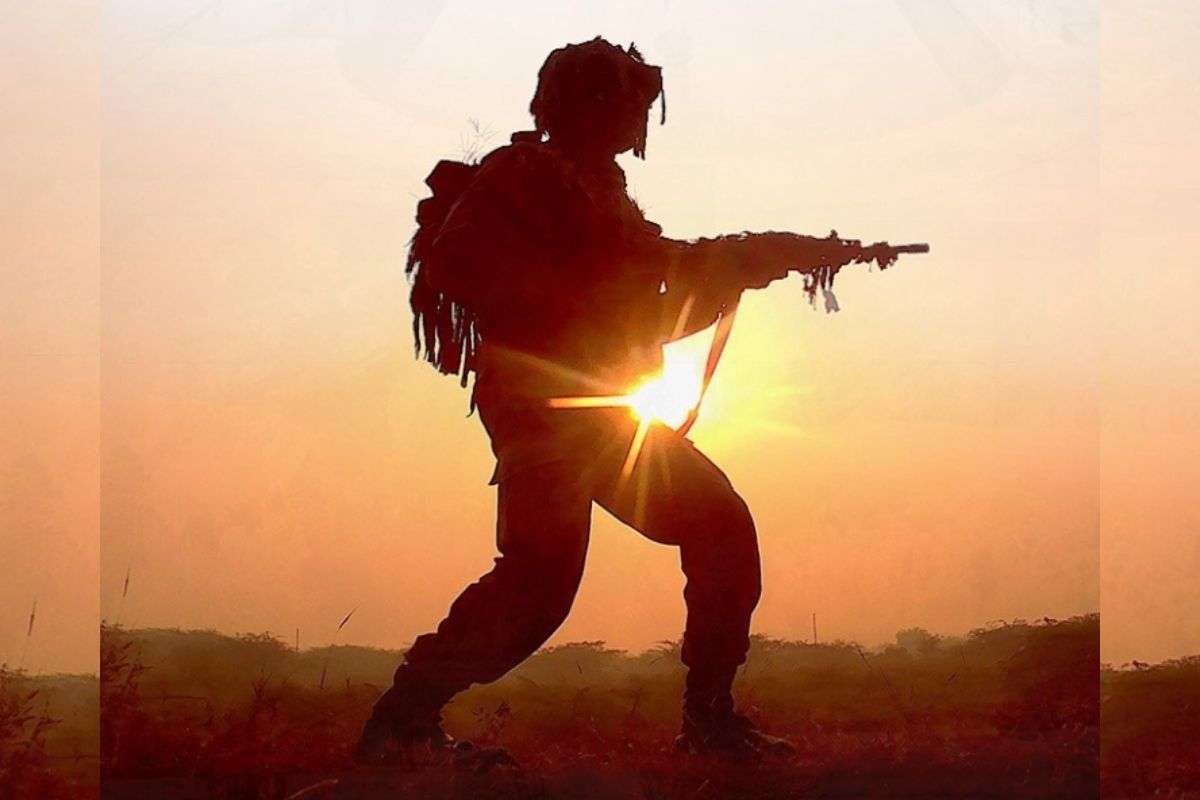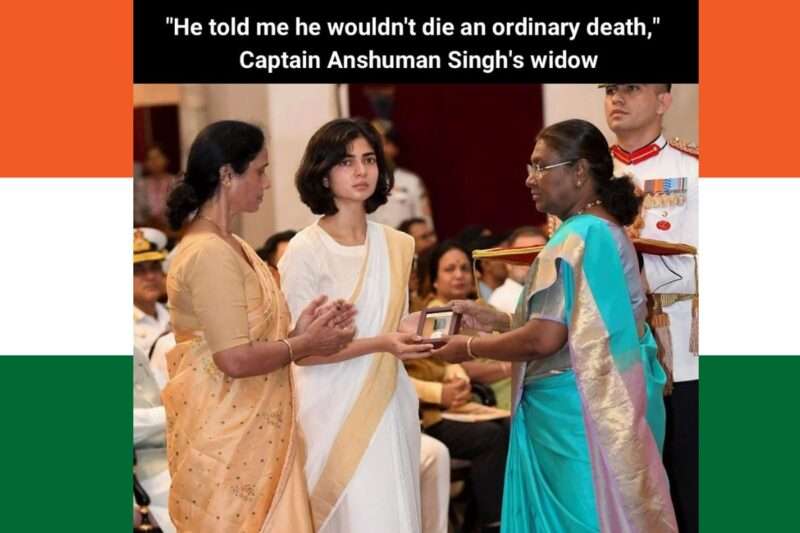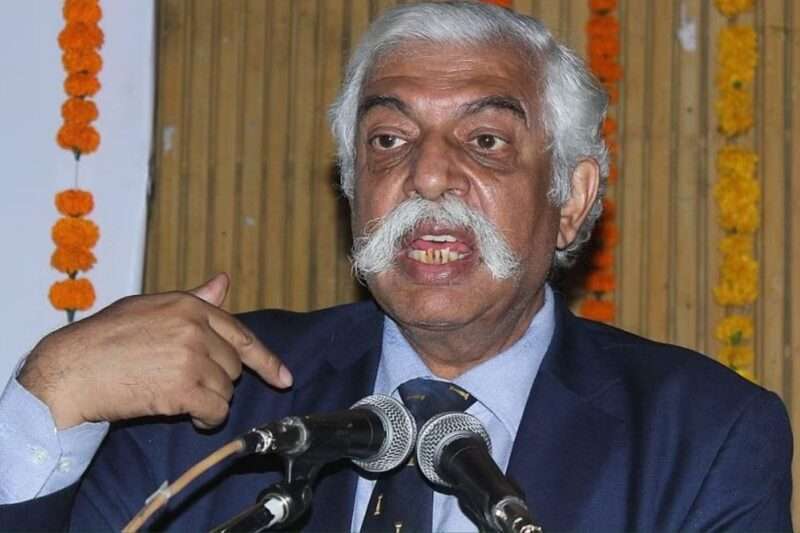Agniveer Debate: Veterans Sound Alarm Over Prioritizing Economic Gains At The Expense Of National Security!

The social media for the last few days has been flooding with videos of Veernari Mrs Smriti Singh, wife of martyred soldier Captain Anshuman Singh, receiving the gallantry award Kirti Chakra from the President of India for her husband’s unexceptional devotion to duty. We, the people of India, will always be debtors to the service these men do for their country and the families that lose their loved ones for the sake of the country. Also, the mother of martyred Captain Mrs Manju Singh, showed disappointment with the ‘Agniveer Scheme’ asking the central government ‘not to divide the Army into two categories’.

The Agniveer scheme (or the Agnipath scheme), was launched by the Indian government in June 2022. This programme introduced a short-term service concept with the aim of modernising and streamlining the recruiting process in the Indian armed services. But since its launch, it has drawn a lot of criticism and controversy, which led to a contentious debate between political leaders including Congress leader Rahul Gandhi and Defence Minister Rajnath Singh.
This topic re-emerged after Leader of the Opposition Rahul Gandhi accused Defence Minister Rajnath Singh of deceiving Parliament about the compensation given to Agniveer families. In a video message, Rahul Gandhi said that, despite Singh’s promises in the Lok Sabha, the family of Agniveer Ajay Kumar had not received the promised Rs 1 crore compensation. He sought an apology from the Defence Minister, noting inconsistencies in the government’s statements. He released a video of the father of Agniveer Ajay Singh, who died in Jammu & Kashmir, and stated that, contrary to Singh’s assertions, his family had not received the promised compensation.
After this, the Indian Army reiterated its commitment to honouring its troops’ sacrifices in the middle of a rising political debate over compensation given to the family of Agniveer Ajay Kumar, who died in the line of duty. According to post by the Army’s Additional Directorate General of Public Information (ADGPI), Agniveer Ajay Kumar’s family has already got Rs 98.39 lakhs in ex-gratia and other benefits. Additional payment of roughly Rs 67 lakhs is scheduled for release following the final account settlement, subject to police verification. This raises the full compensation to around Rs 1.65 crore, in accordance with the Agniveer Scheme.
However, later, speaking with another news outlet, Chaaranjit Singh, the father of the deceased Agniveer, confirmed that he had received Rs 98 lakh in compensation from the Army. “The family first received Rs 50 lakh from insurance and then Rs 48 lakh from the Army. So far, they have got Rs 98 lakh, and they are certain that the Army would send them the remaining Rs 67 lakh shortly,” he added. Charanjit Singh’s admission comes after the Indian Army issued a statement disputing reports that Ajay Kumar’s family did not get compensation.
Also, updating the case, the kin of the soldier’s family are a step closer to getting the remaining compensation. A ‘verification’ that was needed to be done by the Jammu and Kashmir Police has been completed. The Indian Army has been informed through official channels.
However, Charanjit Singh said that the monetary compensation was never a problem. He stated that the problem is not about money. They desire martyr status for the son. He gave his life for the country, but he has not received martyr status or any of the privileges that a martyr’s family receives, including a pension and medical benefits that regular Army officers’ families receive.
As said earlier, this topic of the ‘Agniveer scheme’ is not new. It has been in the limelight since its inception. Moreover, the topic of debate doesn’t revolve around only politicians; many army veterans and experts have flagged problems with this scheme.
So, let’s see why this topic of national importance has been a points of contention for the last two years.
Unemployment: Leaving after 4 years on the Edge of Financial Commitments.
The Agniveer scheme, which seeks to modernise the Indian Armed Forces by recruiting young folks for four-year terms, raises a few issues. The worries comprise not just the possible loss of significant military experience and competence but also the personal ramifications for Agniveers who, after four years of duty, may face unemployment and a loss of the status that comes with it. According to the programme, 75 % of troops will be dismissed after four years of service, with only 25% being re-inducted into the armed forces. Numerically, after four years, three out of every four Agniveers will be demobilised, leaving them jobless. The debate remains: where are these men going?
Afterwards, when the scheme was introduced in 2022, and the Union Home Ministry stated that successful outgoing troops would have preference in recruiting for the Central Armed Police Forces (CAPFs) and Assam Rifles. However, critics have pointed out that integrating ‘Agniveers’ released after four years of military service into CAPFs will be difficult due to the significantly different tasks they play and variations in work cultures.
While CAPFs like the Indo-Tibetan Border Police (ITBP), Border Security Force (BSF), and Sashastra Seema Bal (SSB) are border protection forces whose functions include border policing, anti-smuggling actions, and VVIP security, the Central Industrial Security Force (CISF) provides security to important industrial units and VVIPs, and frisking metro passengers. All of these positions are very different from the military ones that Agniveers would be trained for.
Furthermore, the Central Reserve Police Force (CRPF) is involved, when needed, in a variety of roles ranging from counter-insurgency to assisting police forces in law and order crises. It would be difficult to keep these ‘Agniveers’ motivated because, after serving in the army, they would be forced to join a smaller paramilitary force only for the purpose of employment, said another officer, adding that the CAPFs would also have to deal with released Agniveer’s psychological issues.
The inclusion of Agniveers in CAPFs also contradicts the Home Ministry’s position in recent years. It noted that in recent years, the Union Home Ministry has “steadfastly” maintained that the “terms and kind of service in the CAPF differed substantially from that of the Indian Army, and that the two could not operationally and administratively combine.” “It further supported this rationale with the even more emphatic claim that ‘fauji culture’ contrasted adversely with the CAPF ethos, making inducting army troops into the latter simply ‘unworkable’.”
Similarly, the demobilised Agniveers will be given the advantage in police recruitment, according to the Chief Ministers of UP, MP, and Assam, while the Haryana Chief Minister stated that the state will give them “preference in professions and other obligations.” Although the governments of the aforementioned states have committed to prioritise jobs, there is no guarantee that these commitments would be carried out. The government also claims that throughout their time in service, Agniveers would develop skills that will assist them find employment once they are discharged.
So, there is no guarantee, again, of where these men will go after four years of service. Although one should not take their jobs for granted, however, working in an environment where candidates constantly fear losing their jobs after a short period can have several detrimental consequences. The Agniveers will have a constant fear of job security and worry about their future after four years.
The efficacy of this Agniveer scheme will be determined not by how Agniveers are treated while in service, but by what happens to them once they are released after 4 years. According to the status of short service officers and young retirees from the defence services, the future of Agniveers doesn’t appear to be promising since without guaranteed employment, they would be left to fend for themselves. The meagre sum of Rs 11.71 lakhs as Seva Nidhi will not be enough to see them through.
This aspect is not new or unknown by anyone. It is widely acknowledged that previous governments have failed to protect the interests of short-service commissioned officers, who, after serving the country for 10-15 years, are left to fend for themselves with no pension or job assurances. Many of them avoid the central police organisation and other departments, where they are treated like outsiders and forced to start again. Corporate employees work in areas like security and administration. For decades, all recommendations to improve the post-release conditions of short-service commissioned officers have sat in the Ministry of Defence, accumulating dust.
A considerable %age of personnel in the armed services retire at a young age, between 35 and 50 years old, with great financial commitments, including school-age children. Very few of them find meaningful job, and it is usual to see them working on paltry salaries as security guards or metre readers. Rather than raising the retirement age for these warriors in good physical condition, the government has added Agniveers, who are likely to add to the list of unsatisfied veterans. It is a confusing conclusion, given that all central police organisations have troops who serve until the age of 60.
So, unemployment, which is already a terrible issue in our country, may get even more complex, with the addition of the number of Agniveers dismissed every year after serving years for the country.
Training: Just Enough of 6 Months To Be Incompetent!
Another critical parameter to consider is the possible influence of Agniveers on the efficiency of defence forces. It takes 5-7 years for a recruit to mature into a combat-ready soldier. Fighting groups rely on regimental spirit and camaraderie among its members, values instilled only after years of service. In technical arms/services, talented JCOs/NCOs (junior commissioned officers/non-commissioned officers) learn their trades over time and become the backbones of their units. The four-year system falls short on all points since an Agniveer is unlikely to learn, become a productive member, and contribute optimally to his unit.
According to concerned army officers, this scheme has the potential to risk thousands of Agniveers’ lives because it takes 7-8 years to become a properly trained soldier. This approach will send the retained Agniveers to tough regions where they may be unprepared. The Agniveer programme will have a significant influence on the Indian Navy and Indian Air Force because officers’ tenures end after four years.
While this would disproportionately affect the IAF and Navy, which rely heavily on technology, the Army will also suffer. The essence of waar is changing as technology develops. Why should the armed services inject valuable time and money educating Agniveers to operate advanced weapon systems, missiles, and machines when the major part of them would leave after four years, a senior official, said to a news organisation.
There is no way to fast-forward training in the services. According to another military analyst, Major General Amrit Pal Singh (retired), the training Agniveers would get will be inadequate, and in combat scenarios, they will become a burden on more experienced forces, who for their part, had undergone extensive training in varied high altitude, desert and jungle terrain. According to the veteran, the Agniveers will only occupy basic posts in the military, leaving the army with a dearth of trained troops for many years.
According to Major General Amrit Pal Singh, who has headed the training vertical of Army Training Command (ARTRAC) for over two and a half years, India has skilled forces who have completed significant training and are tech-savvy after a five to six-year period. By the time an Agniveer develops a certain skill set, he will be ready to leave the service, leaving a space that will be filled by another possible recruit, he says.
Target Practice in the Boardroom: Do Corporates Need Sharpshooters Now?
A troubled future awaits people if promised re-employment does not materialise after release. “With limited employment opportunities, the possibility of weapon and combat-trained Agniveers engaging in criminal activity cannot be ruled out. Unemployment for men in their 20s with military training who have been used to a accustomed monthly pay for four years would be ‘nightmarish’ in a country plagued by militancy, caste conflicts, land mafias, and gang wars.

Senior defence and security officials have warned about the possibility of huge numbers of young armed forces soldiers being unemployed after being discharged from the Agniveer completion. They warned that as a result, thousands of such weapon, combat, and technically trained servicemen, who are now around 21 years old and will be released back into society in six or seven years, may be able to exploit their soldierly skills in a negative way, either by spawning or bolstering armed groups. Worse, they may be forming “caste armies” to oppose the state.
Some of the more entrepreneurial ones, on the other hand, may eventually find up working for international mercenary organisations and private military contractors (PMCs) in a thriving industry worth more than $200 billion each year. Mercenaries, or soldiers of fortune, and PMCs are slowly increasing internationally, as observed in Ukraine, and both groups are always seeking for trained soldiery, a criterion that released Agniveers troops would easily meet.
For decades, successive Indian governments’ record in providing ex-servicemen with re-employment, in either the public, private, or government sectors, has been terrible, and is expected to become even more precarious as economic turmoil multiplies and joblessness expands. With such a terrible financial condition, these released soldiers would have few options but to pursue criminally rich chances. Furthermore, their vast numbers were virtually expected to promote the militarization of civil society, which will not be a good signal.
How downsizing, in the pretext of rightsizing the army, can be a dangerous call for the country?
The Agnipath Scheme, which was launched with significant fanfare, has two main goals:
- To lower the age profile of the armed services- the reduction of manpower.
- To minimise the growing pension component, with the savings going towards modernisation- the reduction of pension bills.
The notion that the pension bill impedes modernisation is incorrect since it implies that the military has exclusive responsibility for national defence. A strong national defence requires ongoing financing, training, and equipment rather than only reactive efforts during emergencies. The political class does not publicly recognise the second component. Anyway, there is no place for ambiguity or opaqueness regarding national security.
History has repeatedly shown that downsizing the military has terrible effects, most notably in 1947 and 1962. In the late 1950s, ill-conceived initiatives, such as Krishna Menon and Gen BM Kaul’s insistence on using soldiers for farming and building, perhaps contributed to the unpreparedness and tragedy of 1962. In contrast, the armed forces’ subsequent growth and reforms following this setback opened the way for India’s successes in 1965 and 1971, highlighting the need of a well-supported and equipped military for national security.
However, the pull of downsizing restored in the 1990s, resulting in a reduction of around 50,000 personnel. This coincided with the Kargil War, which highlighted the dangers of a weak military. Although the Kargil review committee and Group of Ministers suggested a more young force composition, they never intended to establish a short four-year term like the Agnipath proposal. These committees recognised the need to balance revenue with capital expenditures but did not require that it be accomplished at the expense of soldiers or within a constrained budget.
Notably, India’s defence budget remains relatively low in proportion to GDP, showing potential for increasing investment in the armed services. The current safety situation necessitates a force consisting not only of young warriors but also of highly skilled and technically capable personnel who understand the nuances of modern combat.
The Agniveer scheme’s focus on short-term service raises worries about 75% of trained soldiers leaving after four years, impeding the development of experienced leaders and experts required for a well-rounded military. A balanced approach is required, combining young enthusiasm with senior expertise. While new recruits are enthusiastic and adaptable, experienced troops give important leadership, tactical expertise, and institutional memory.
In this recent elections, alliances of NDA have urged the BJP government to have a deeper insight on the Agnipath Scheme.
In the midst of various meetings to solidify government formation efforts following the Lok Sabha polls, which resulted in the NDA coalition securing a majority, BJP alliance partners, JD(U), said that they want the new government to review the “Agnipath” scheme for short-term armed forces recruitments. Recently, When questioned about the present political debate over the Agniveer plan, former Air Chief Marshal RKS Bhadauria stated on the ANI podcast that “there will be reviews.” The former Air Chief Marshal acknowledged the possibility of tinkering and stressed that there would be reviews.
India’s army recruiting history displays constant change and flexibility, ranging from the discriminatory “martial races” doctrine of the British Raj (1857-1947) to the contemporary Agnipath plan. Post-independence, India switched from regional and caste-based recruitment to an all-India, all-class system in 1961, launching the 7-Year Service Scheme. State quotas were introduced to ensure a national composition, and the emphasis eventually switched to keeping experienced soldiers and guaranteeing stability through the colour scheme of service, which included assured pensions and other benefits.
This historical trend indicates that recruiting techniques, patterns, and quotas are subject to change. They should be examined and updated on a regular basis to suit the armed forces’ changing problems and demands, resulting in a well-rounded and successful military force.
As the Kargil War showed, previous attempts to shrink the military, notably reductions in animal transport without appropriate replacements, have resulted in uncalculated expenditures. We must learn from history and avoid repeating its mistakes. Reforms should be adopted only when a clear end state and superior alternatives exist, not just to save money. It is critical to understand the hidden costs of rebuilding and re-enlisting a smaller military during times of crisis.
Admiral K B Singh, who retired as Navy Chief in November 2021, recently stated in a post on ‘X’ that the primary purpose driving Agnipath is to reduce pension bills. Everyone who understands national security knows that this strategy will reduce battle effectiveness.
Another former Navy Chief, Admiral Arun Prakash (retd), stated, “Economics must take a back seat to national security.” The primary criterion for every military modification or reform must be: “Does it improve or diminish combat effectiveness?”
Even the Major General G.D. Bakshi (retired), who is normally a strong backer of the government’s policies on prime-time news programming, was “flabbergasted” by the Agniveer scheme. Several serving military officers and veterans say the overarching critical concern that the Agnipath scheme will “degrade” combat effectiveness and operational efficiency is being ignored despite the clear and present threats posed by China and Pakistan.

The point highlighted at the start of this article is that the father of deceased Ajay Kumar highlighted that ‘their son has not given the MARTYRED status’, and the ask that the mother of late Captain Anshuman Singh said about the ‘division of army in two classes’ is inevitable. Despite ongoing arguments, both the Ministry of Defence and the Ministry of Home Affairs have emphasised that the term ‘martyr’ has no formal acceptance in government usage, emphasising the separate nomenclature and merits provided to Agniveers as compared to regular soldiers. However, don’t you think that service in the defence is a matter of pride, and who lays down for the country for securing national boundaries and fellow citizens should be awarded a title to reward their supreme sacrifice?
The army veterans are also concerned that this Agnipath scheme is creating two classes of soldiers: Agniveers and Regulars, with one having a better salary, annual leave, and pensions. This will pave the way for unhealthy competition among Agniveers to demonstrate their readiness for retention to become regular troops. If the Constitution can be changed over 100 times, what’s the harm in amending Agnipath? Ultimately, national security should not take a backseat in the pretext of economic gain!




